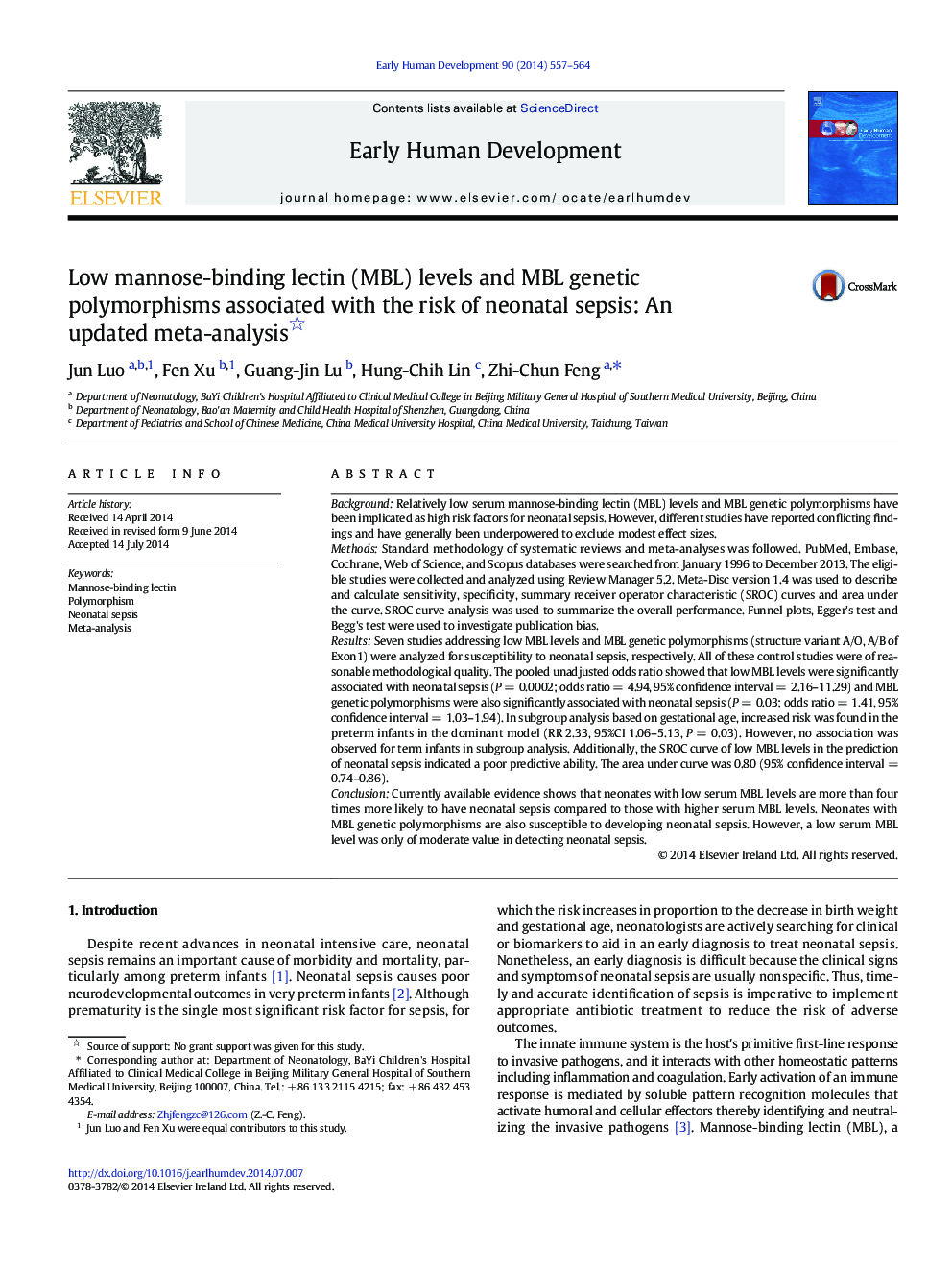| Article ID | Journal | Published Year | Pages | File Type |
|---|---|---|---|---|
| 3916631 | Early Human Development | 2014 | 8 Pages |
•Low MBL levels and MBL genetic polymorphisms are associated with neonatal sepsis.•The present is the first to estimate MBL with the risk of neonatal sepsis.•The diagnostic accuracy of low MBL levels for neonatal sepsis
BackgroundRelatively low serum mannose-binding lectin (MBL) levels and MBL genetic polymorphisms have been implicated as high risk factors for neonatal sepsis. However, different studies have reported conflicting findings and have generally been underpowered to exclude modest effect sizes.MethodsStandard methodology of systematic reviews and meta-analyses was followed. PubMed, Embase, Cochrane, Web of Science, and Scopus databases were searched from January 1996 to December 2013. The eligible studies were collected and analyzed using Review Manager 5.2. Meta-Disc version 1.4 was used to describe and calculate sensitivity, specificity, summary receiver operator characteristic (SROC) curves and area under the curve. SROC curve analysis was used to summarize the overall performance. Funnel plots, Egger's test and Begg's test were used to investigate publication bias.ResultsSeven studies addressing low MBL levels and MBL genetic polymorphisms (structure variant A/O, A/B of Exon1) were analyzed for susceptibility to neonatal sepsis, respectively. All of these control studies were of reasonable methodological quality. The pooled unadjusted odds ratio showed that low MBL levels were significantly associated with neonatal sepsis (P = 0.0002; odds ratio = 4.94, 95% confidence interval = 2.16–11.29) and MBL genetic polymorphisms were also significantly associated with neonatal sepsis (P = 0.03; odds ratio = 1.41, 95% confidence interval = 1.03–1.94). In subgroup analysis based on gestational age, increased risk was found in the preterm infants in the dominant model (RR 2.33, 95%CI 1.06–5.13, P = 0.03). However, no association was observed for term infants in subgroup analysis. Additionally, the SROC curve of low MBL levels in the prediction of neonatal sepsis indicated a poor predictive ability. The area under curve was 0.80 (95% confidence interval = 0.74–0.86).ConclusionCurrently available evidence shows that neonates with low serum MBL levels are more than four times more likely to have neonatal sepsis compared to those with higher serum MBL levels. Neonates with MBL genetic polymorphisms are also susceptible to developing neonatal sepsis. However, a low serum MBL level was only of moderate value in detecting neonatal sepsis.
